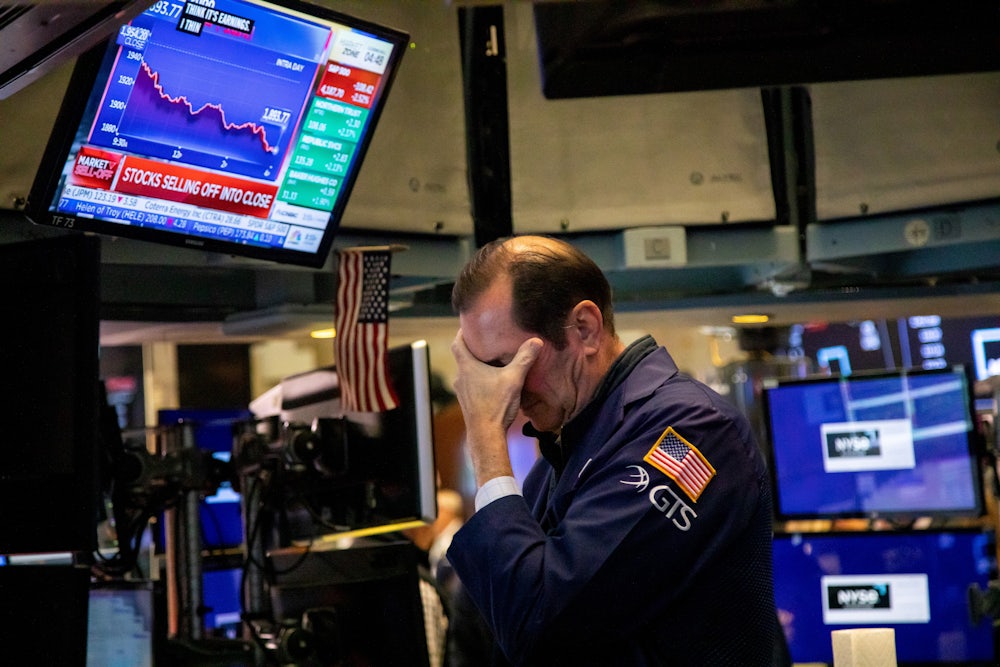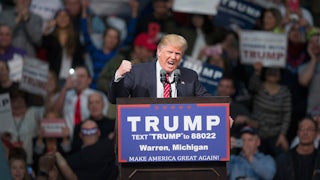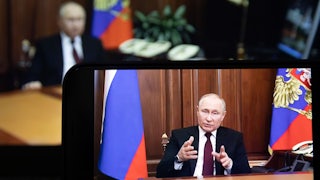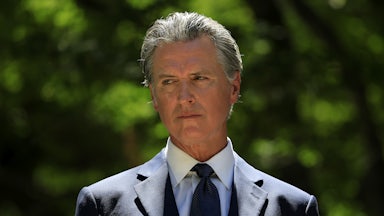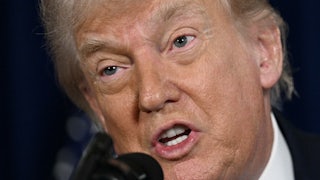It’s time to talk about the R-word.
“Economy shrinks 1.4 percent in first 3 months of year, raising recession fear,” says a Washington Post headline. A recession is two consecutive quarters’ decline in gross domestic product. The Post’s normally judicious Catherine Rampell all but predicts we’ll record a second quarter of decline three months from now, noting that “historically, most of the times the Fed has raised interest rates to get inflation under control, it (accidentally) tipped the economy into recession.” Deutsche Bank predicts “a significant recession by late 2023.” Such an outcome would pose a mortal threat to Democrats in the midterms, the 2024 presidential election, or both.
But none of these predictions reflect the consensus view. A recession, while certainly possible, is no more likely than a return to economic growth during the second quarter (i.e., April, May, and June). We’re still in a Covid economy. Covid-19 is mostly receding as a health threat in the United States. But it’s still galloping across China and the rest of the globe, and that’s weakening the U.S. economy.
We’ve never had a Covid economy before, which is why just about every economic prediction you heard over the past 26 months (including, ahem, some of mine) turned out more wrong than economic predictions usually are. Various indicators are pointing in crazily different directions.
Gross domestic product, which soared by 6.9 percent in the last quarter of 2021, was never going to expand at that rate in the first quarter of 2022, but not a lot of people expected it to fall by 1.4 percent, as the Commerce Department announced Thursday. Nobody expected this because (a) the Fed, during the first three months of 2022, didn’t raise interest rates (the first increase since 2018 wasn’t even announced until March 17); and (b) consumer spending, which accounts for the bulk of GDP, rose crazily.
After the GDP news broke, we found out that consumer spending has been rising even faster than we thought. Personal consumption rose in March by 1.1 percent in nominal dollars and 0.2 percent after inflation, with inflation calculated conservatively in “chained” 2012 dollars. In February, Commerce reported last month, personal consumption rose 0.2 percent, but on Friday that was revised upward to 0.6 percent (0.1 percent after inflation). We are a country where people spend more than they have, and that was reflected in the Commerce report. Disposable income, which has mostly been falling in recent months after inflation, fell 0.4 percent after inflation in March, even as consumer spending was rising 0.2 percent after inflation.
What were we spending our money on? Mainly services, which took a beating during the worst of the Covid epidemic because when you consume services (eating a restaurant meal, say, or flying on a plane to Paris), you have to interact with potentially contagious humans. Spending on services didn’t return to pre-Covid levels until June 2021, and it’s been rising briskly ever since, led in March by international travel (as anybody who’s purchased an international plane ticket recently may have noticed).
Spending on the purchase of manufactured products is a more complicated story. Spending on “durable goods” like automobiles fell because of continuing supply chain problems abroad. But spending on “nondurable” goods like gasoline rose, largely because of Putin’s war in Ukraine. Consumer spending on gasoline has risen nearly 18 percent since January, a period during which the price of gasoline rose about 27 percent. This is what economists mean when they call demand for a certain product “inelastic.” When gas prices go up, you can cut back on your driving a little bit, perhaps, but you’re mostly just going to end up paying through the nose.
Another factor is the cost of hiring. The Labor Department on Friday released the employment cost index, or ECI, for the first quarter of 2022, and, as expected, it was high. The ECI is handy because it includes both wages and benefits, thereby giving you a decent picture of how much more it’s going to cost a business to hire somebody compared to the previous quarter. From January through March of this year, the ECI rose 1.4 percent over the fourth quarter of 2021, with wages rising 1.2 percent and benefits rising 1.8 percent.
/ In honor of Earth Day, TNR’s climate coverage is free to registered users until April 29. Start reading now.
Over the past 12 months, the ECI has risen 4.5 percent, with wages rising 4.7 percent and benefits rising 4.1 percent. That would be a lot if inflation hadn’t risen by 8.5 percent during the same period. But it did, so in real terms the cost of hiring someone actually fell, even as corporate profits in 2021 rose 25 percent before taxes and 37 percent after taxes. Pretax corporate profits haven’t risen that fast since 1976, Fortune’s Will Daniel reported last month, and after-tax corporate profits have never risen that fast since the Federal Reserve started the current data series in 1948.
You can see why people are having a hard time figuring out what’s going on. Corporate profits are up, and GDP is down. Consumer spending is up, and disposable income and real wages are down. It’s more expensive to hire someone than it used to be, but corporations have more money to do so than since before Milton Berle became Mr. Television. Covid has turned the U.S. economy screwy.
Even before the May GDP report, Harvard economist Larry Summers was predicting a return to 1970s-style stagflation, a prediction that last month I called “pretty nuts.” It looks only slightly less nuts now. “Notwithstanding the first-quarter GDP number,” writes Alan Blinder, a very wise Princeton economist who was vice chairman of the Fed in the mid-1990s, “the Fed is trying to steer a basically healthy economy.” Will we get a recession? “Maybe,” writes Blinder. “But it’s important to note that any recession shouldn’t be deep and long, in contrast with those of the 1970s and early 1980s.” And there’s a decent chance we won’t have a recession at all.
In the meantime, you might consider going a little crazy with your credit card. Inflation is a problem for the Democrats, but a recession, even a mild, Blinderesque one, would be a much bigger problem. So take that trip you can’t afford to Costa Rica. Take it even though your disposable income is probably shrinking and your paycheck isn’t keeping up with inflation. And if you work in a nonunion shop, which probably you do, think about organizing. Your boss is sitting on a historically tall pile of dough, and it’s his patriotic duty to spend more of it on his employees.
